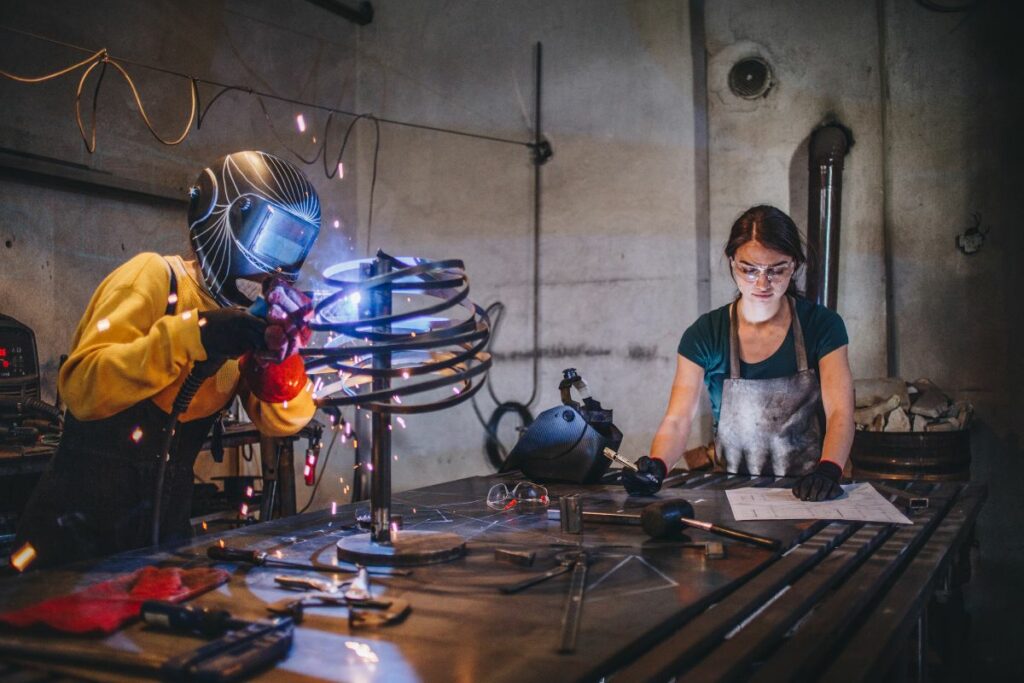
Plenty of remarkable women have already paved the way toward skilled trades. And despite the fact that women in welding is not so uncommon today as it perhaps was decades ago, there still remained many questions that boggle the minds of the curious.
This article aims to answer some frequently asked questions about women and their work in welding.
Underlying questions about welding’s risks and dangers are foreseeable. These are stressed even further when women are involved as the profession has been greatly associated as a man’s job.
It’s undeniable that the work could entail some risk when standard protocols and procedures are not followed such as eye injuries, respiratory issues, and the like. But safe to say that unless you are pregnant, the profession is not more or less dangerous for women than it is for men.
It is worthy to note that through the years, many organisations today are more conscious and proactive than ever in paying attention to the health and safety of their employees. These can often look like providing sufficient protective equipment and safety standards training for all.
According to information published on the government website Careers New Zealand, welders usually earn $44,000 – $70,000 per year (Trade Me Jobs, 2017). While as of June 2022, job portal Indeed, reports that the average salary of a welder is $28.17 per hour.
Another website, Salary Explorer, states that a person working as a welder in New Zealand typically earns around 2,250 NZD per month in 2022. Nevertheless, it is important to take note that experience level and specialisation are factors in determining rates and salary.
Gone are the days when females are looked down upon as a lesser gender. As the times evolve and more and more companies progressively lean towards inclusivity, there has never been a better time to dive right in, equip yourself with the technical and practical skills, and find a rewarding job in welding.
With more people doing the work and checking themselves against gender bias, you can keep an optimistic view that your qualifications and professional attitude matter more than your gender.
If you’ve ever wondered if women become famous or successful in this field – the answer is yes. To give you a dose of motivation and perhaps more reasons to pursue welding, you can look up some of these successful female welders.
Start with the legendary Rosie the Riveter during war times in the 1940s. She was one of the pioneers of women empowerment in the field of welding, and represented women and defense workers.
Gabrielle Shelton, the owner of Shelton Studios of Brooklyn New York, a metal fabrication shop, worked as a versatile welder and used this to climb up her career ladder. She encourages a lot of women in the welding field sharing that “the more women welders we have, the less surprised people will be when they see one”.
Lastly, Amanda Young, president of ASNT NDT Level 3, American Welding Society (AWS) Certified Welding Inspector. She shared how the welding and inspection industry allowed her to build a great life for the last 15 years. Her career has proved that women entering this industry can thrive and succeed with grit and hard work.
When you visualise welding, you usually see rust, oil, grease, cluttered materials, and splattered paint all over the place—all of which generally appear to be dirty. However, welding is not always messy and chaotic. Much of the dust and flux can easily be cleaned.
Today, there are more manual and semi-automatic welding. For example, with an automated welding machine, a welder can either just operate the machine or monitor the entire process. This method is often utilised for welding that involves large-scale operations like cars.
There are no statistics and studies stacked up against women working in welding that could stop any female who has grit and perseverance to pursue whatever profession she so chooses. While it may take some more work to finally bury some outdated thinking and concepts about the profession, having the conversation is a start.